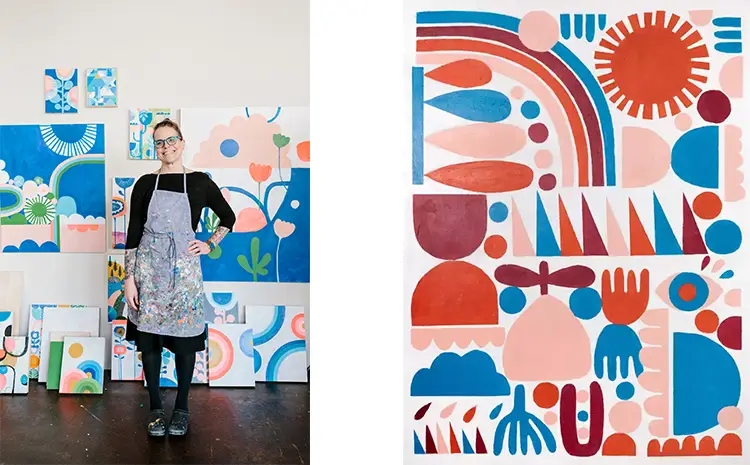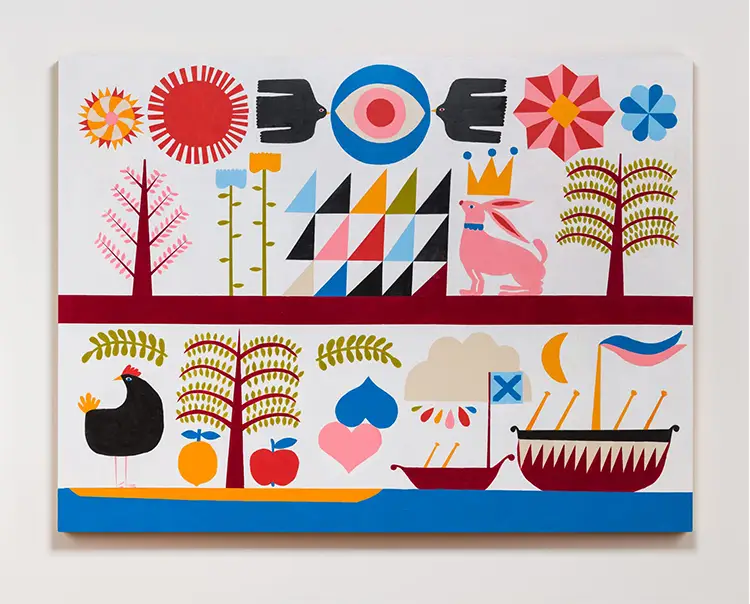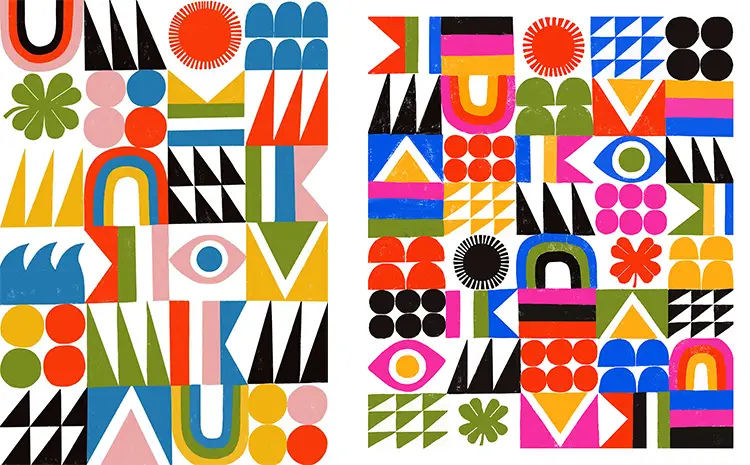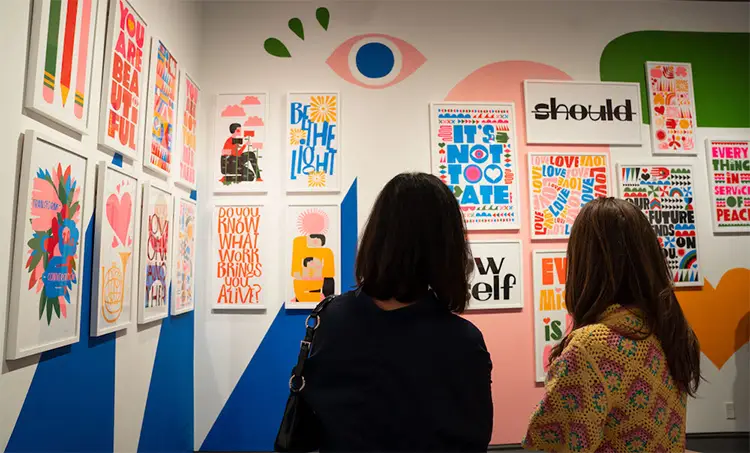A Late Bloom Ignites a Brilliant Spark
Before Lisa Congdon became a celebrated name in contemporary illustration and design, her life followed a path far from studio walls and gallery lights. Her transition into the arts occurred not during the early, formative years when most creatives begin honing their craft, but in her thirties—a period when many feel it’s already too late to start anew. Prior to picking up a paintbrush, Congdon worked as a school teacher and later navigated the nonprofit sector as a project manager. Art initially served as a personal release, a hobby that soothed rather than defined her. Weekend watercolor classes offered a quiet reprieve, but it wasn’t long before this casual interest sparked something deeper. Sharing her work during the early days of online platforms like Flickr and blogging, she found an unexpected and enthusiastic audience that began to lay the foundation for her professional future.
Without a formal art education or institutional affiliations, Congdon’s journey into the creative field was riddled with both excitement and uncertainty. Lacking conventional training, she was left to decode the art world’s complexities on her own—learning the nuances of pricing, contracts, and licensing through trial and error. Rather than seeing her nontraditional path as a limitation, she embraced it as a strength. Her previous experiences had armed her with resourcefulness and determination—skills that proved indispensable in building a sustainable career. The self-taught approach also nurtured a sense of independence, allowing her to shape an artistic voice unburdened by academic expectations. The confidence she developed from navigating these challenges became a cornerstone of her evolving philosophy: that artistry isn’t confined to a specific timeline or pedigree.
That philosophy eventually extended beyond her own practice and into mentorship. As her career gained momentum, aspiring artists naturally gravitated toward her, eager to understand how she had constructed a thriving business from scratch. Her willingness to share both successes and failures evolved into writing, including impactful titles such as Art Inc. and Find Your Artistic Voice. These books serve as roadmaps for emerging creatives, offering not just tactical advice, but emotional solidarity. For Congdon, transparency is more than a teaching method—it’s a commitment to uplifting others by making the often-obscured path to creative fulfillment more visible and less intimidating. Her own experience, marked by detours and self-discovery, fuels her belief that everyone deserves the chance to pursue art on their own terms.

Lisa Congdon: Building with Color, Connecting Through Values
Congdon’s visual language—bold, colorful, and unapologetically uplifting—has drawn the attention of major clients like the Museum of Modern Art, Google, Target, and The Library of Congress. Her distinct style is immediately identifiable, not only for its aesthetic clarity but for the ethos embedded within it. Each piece resonates with themes of inclusion, empowerment, and optimism. These aren’t incidental messages but core tenets of her artistic mission. By crafting work that feels joyful and accessible, she invites a broad audience to engage with visual culture in a way that feels personal and affirming. This emotional accessibility, coupled with sharp, graphic design sensibilities, positions her as a favored collaborator for institutions seeking art that speaks to both beauty and social consciousness.
Her success in commercial ventures is partly rooted in her background outside the arts. Years spent in education and nonprofit management taught her the value of clear communication and shared goals. She approaches commissioned work with the mindset of a collaborator rather than a solitary artist. This openness makes her an asset in creative partnerships, where balancing a client’s objectives with personal style is essential. Congdon doesn’t view external constraints as obstacles, but as opportunities for problem-solving—an approach that transforms commercial assignments into creatively fulfilling challenges. By blending artistic integrity with practical flexibility, she consistently produces work that satisfies both her vision and her clients’ needs.
Alongside her commercial endeavors, Congdon continues to present her work in galleries across the United States and abroad. These exhibitions offer her a space for deeper introspection—free from the limitations often imposed by corporate branding or consumer trends. In gallery settings, she explores ideas that are more abstract or emotionally complex, engaging in personal narratives that don’t always conform to market expectations. This duality between commercial and fine art practice enhances her range, allowing her to continually test new visual strategies while staying grounded in themes that matter to her. Switching between public commissions and private creations enables Congdon to sustain a dynamic, evolving career that resists stagnation and embraces continuous growth.

The Folk Spirit and Everyday Wonder
Congdon’s signature aesthetic draws heavily from global folk art traditions, an influence that shapes both the structure and symbolism of her work. She gravitates toward simplified forms, repeated motifs, and vibrant palettes—visual elements that carry cultural resonance and emotional clarity. The impact of Alexander Girard, a design pioneer known for his reinterpretation of folk themes through modernist lenses, is especially evident in her practice. Like Girard, Congdon blends hand-crafted sensibilities with a contemporary edge, transforming traditional iconography into something fresh and resonant. Her art often feels both timeless and of-the-moment, honoring the legacy of visual storytelling while speaking to the needs and hopes of today’s audiences.
Her affinity for handwork is deeply personal, shaped by her upbringing in a household rich with handmade beauty. With a mother who was both a weaver and a quilter, Congdon was surrounded from an early age by materials transformed through labor and love. This background instilled in her a respect for the tactile process and a sensitivity to the quiet details of creation. That ethos continues to inform her practice—whether she’s sketching, painting, or assembling design compositions. The idea that something ordinary can be elevated through thoughtful arrangement is central to her artistic approach. She seeks to capture wonder in the familiar, treating even the most modest visual elements with care and intention.
That sense of wonder extends to her daily life, where even her dog Milkshake becomes part of the creative narrative. The small white pup—equal parts companion and studio sidekick—has found her way into children’s books, including Rain, and serves as an unofficial mascot in Congdon’s universe. With a personality as vibrant as the colors in Congdon’s work, Milkshake embodies the artist’s ability to find joy in unexpected places. Whether it’s the squeaky toys she adores or her aversion to delivery trucks, Milkshake adds levity and emotional texture to Congdon’s world. These small domestic details, lovingly observed and occasionally immortalized in illustrations, remind us that art is not just a practice but a reflection of life’s accumulated, everyday moments.

Lisa Congdon: Moving Forward With Intention and Grace
In addition to her work as an illustrator and author, Congdon leads a multifaceted life that includes cycling, baking, and collecting vintage artifacts—all of which contribute to her creative sensibility. Competitive cycling, in particular, has become both a physical pursuit and a mental reset. Riding nearly every day around Portland and participating in races nationwide, she uses this time to generate ideas and reconnect with a sense of physical liberation. Her involvement with the cycling community has even extended into design collaborations and advocacy, merging aesthetics with activism. This blend of movement and mindfulness offers a counterbalance to the stillness of studio work, enabling her to maintain mental clarity and creative drive.
Her love for baking—especially sourdough bread—adds another dimension to her artistic life. Baking provides a meditative rhythm that contrasts the often fast-paced world of client work and deadlines. It’s an act of patience, care, and process, mirroring the qualities required in visual art. Similarly, her collection of vintage office supplies and educational tools reveals a fascination with the aesthetics of the past. These objects—often worn, oddly designed, or beautifully utilitarian—are carefully arranged, photographed, and sometimes translated into product designs. This practice of collecting and curating serves as both a creative archive and an emotional reservoir, reminding her of the value of design history and the beauty of analog craftsmanship.
After years of pushing herself across multiple disciplines and professional demands, Congdon recently made the intentional choice to slow down. Facing burnout from managing more than twenty concurrent projects, she recognized the need for recalibration. Rather than stepping back completely, she restructured her workflow to focus on fewer, more meaningful endeavors. Passive income from book royalties and licensing deals provides financial breathing room, but it’s her shift toward deeper, intentional work that marks the evolution of her practice. Embracing slower rhythms has not meant sacrificing ambition—it’s meant refining her focus. Today, Congdon continues to create, teach, and connect with her community, proving that growth doesn’t always come from acceleration, but often from knowing when—and how—to pause.








